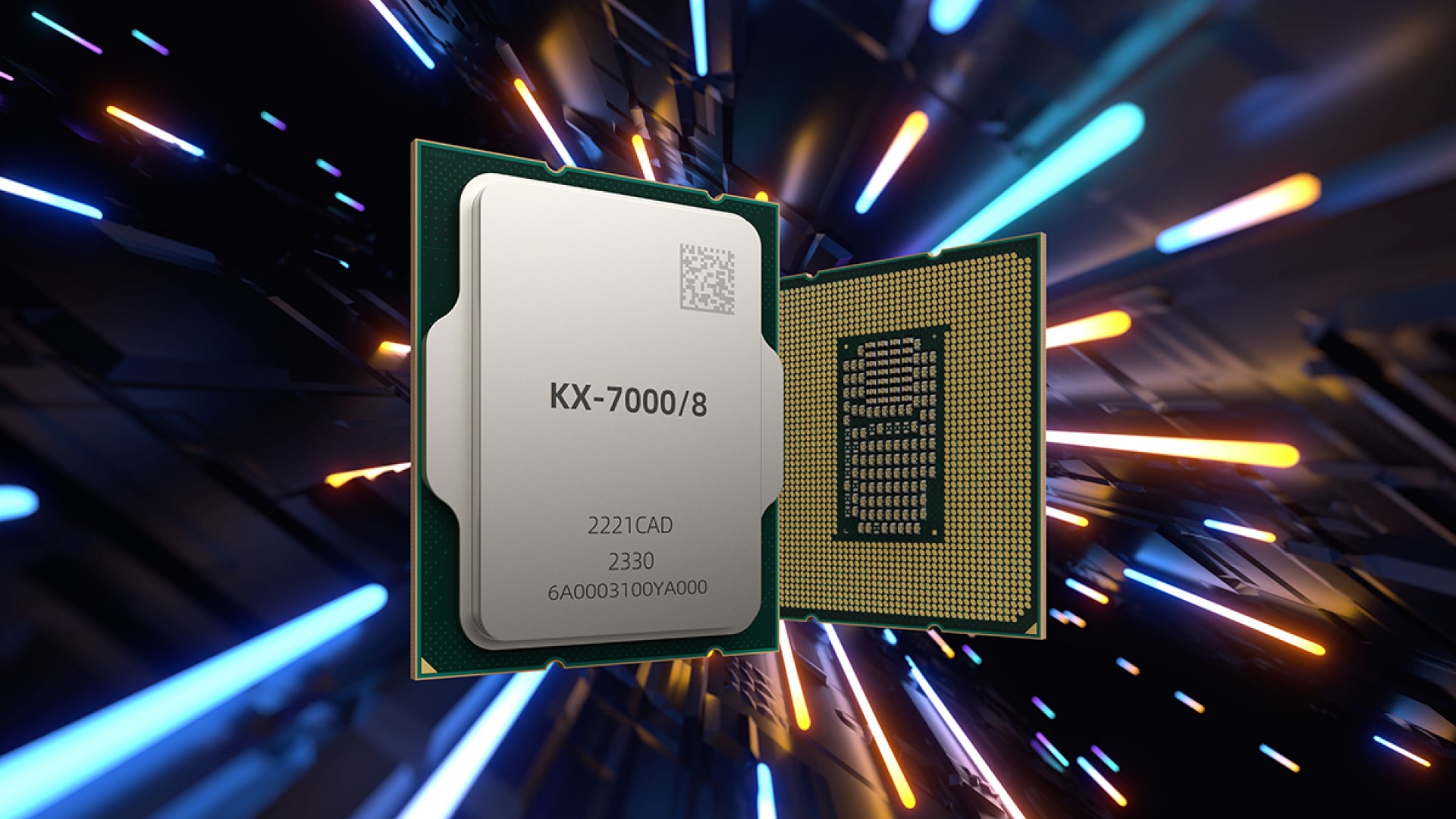
A leaked Geekbench 6 result for Zhaoxin's new KX-7000 CPU shows that it's over twice as fast as its old KX-6000 series KX-U6780A. The benchmark score indicates that not only has Zhaoxin substantially improved clock speeds, but also instructions-per-clock (or IPC) with its latest CPU architecture. However, the KX-7000 is only about on par with competing AMD and Intel CPUs from the mid-to-late 2010s.
Zhaoxin isn't the only CPU designer in China, but it is unique given that it has a license to the x86 architecture that AMD and Intel use for their processors. The company announced its KX-7000 CPUs late last year, and claimed they would be twice as fast as the prior KX-6000 series. The spec sheet indicated roughly a 20% frequency gain and significantly faster DDR5 and DDR4 memory support (KX-6000 only supports DDR4).
Those improvements alone probably wouldn't double performance, but the purported architectural advancements may make up the difference. Zhaoxin boasts that KX-7000 and its latest Century Avenue architecture feature a new front-end, introduce out-of-order execution, and a better cache and memory system.
KX-7000 adds 32MB of L3 cache to the mix for a total of 36MB combined L2 and L3 cache, compared to KX-6000's 8MB of L2. Plus, KX-7000 supports faster DDR5-4800 and DDR4-3200 RAM while KX-6000 only supports stock DDR4-2666.
In the table below, we've compared the KX-7000 chip's score to a KX-U6780A result, as well as the aggregate score of the Ryzen 5 2500X and the Core i3-8300, according to Geekbench. For the KX-U6780A, we selected the median result benchmarked in Windows (just like the KX-7000 was), though there were both significantly faster and slower scores.
Though KX-7000 is apparently rated for up to 3.7 GHz, Geekbench says that it only hit 3.3 GHz. Nevertheless, the CPU was almost three times as fast as the KX-U6780A, which is the second-fastest processor in the KX-6000 lineup. Although we don't know what kind of RAM the KX-7000 sported during benchmarking, we can conclude that KX-7000's architectural improvements are largely responsible for the uplift in performance, assuming that this is a legitimate result.
Similarly performing AMD and Intel CPUs include the quad-core Ryzen 5 2500X and Core i3-8300. These chips had a pretty similar multi-core score, but pulled ahead substantially in the single-core score. These AMD and Intel CPUs have a clock speed roughly 20% faster than the KX-7000, but are about 40% and 60% faster respectively, implying that much of the performance gap is down to architectural design.
While this isn't an amazing position for KX-7000 to be in, the new CPU supports as many PCIe lanes at 4.0 speeds and as much RAM as more recent-gen AMD and Intel platforms. Zhaoxin does lack PCIe 5.0, but given that only SSDs at the moment are taking advantage of PCIe 5.0, it's not a massive disadvantage.
Although KX-7000 clearly won't be breaking any records, for China it's a big improvement. Technological autonomy is a priority for the country, and while performance leadership would be nice, it's not necessary. With performance roughly on par with CPUs like the 2500X and the 8300, KX-7000 could power decent PCs made entirely from Chinese hardware.







